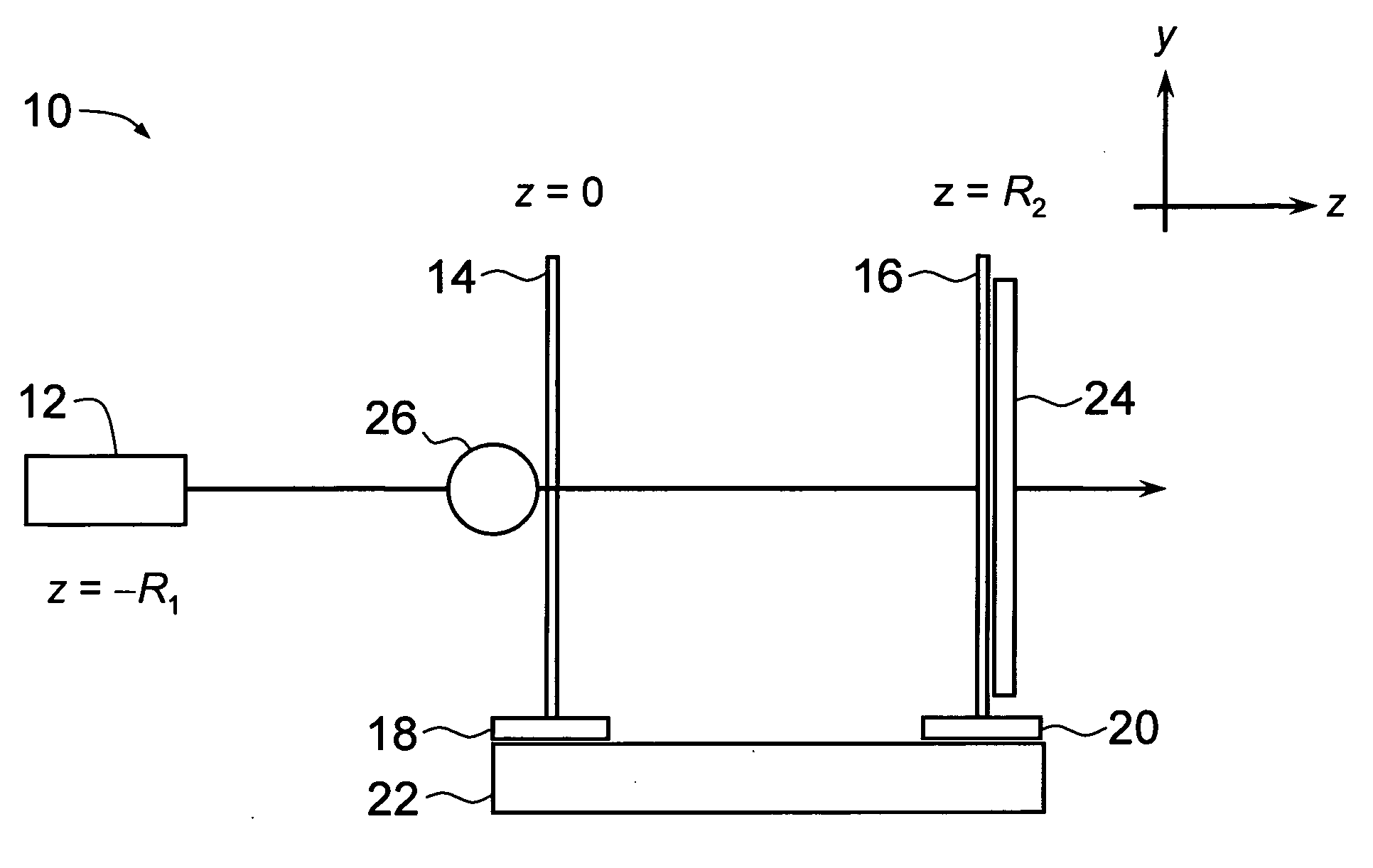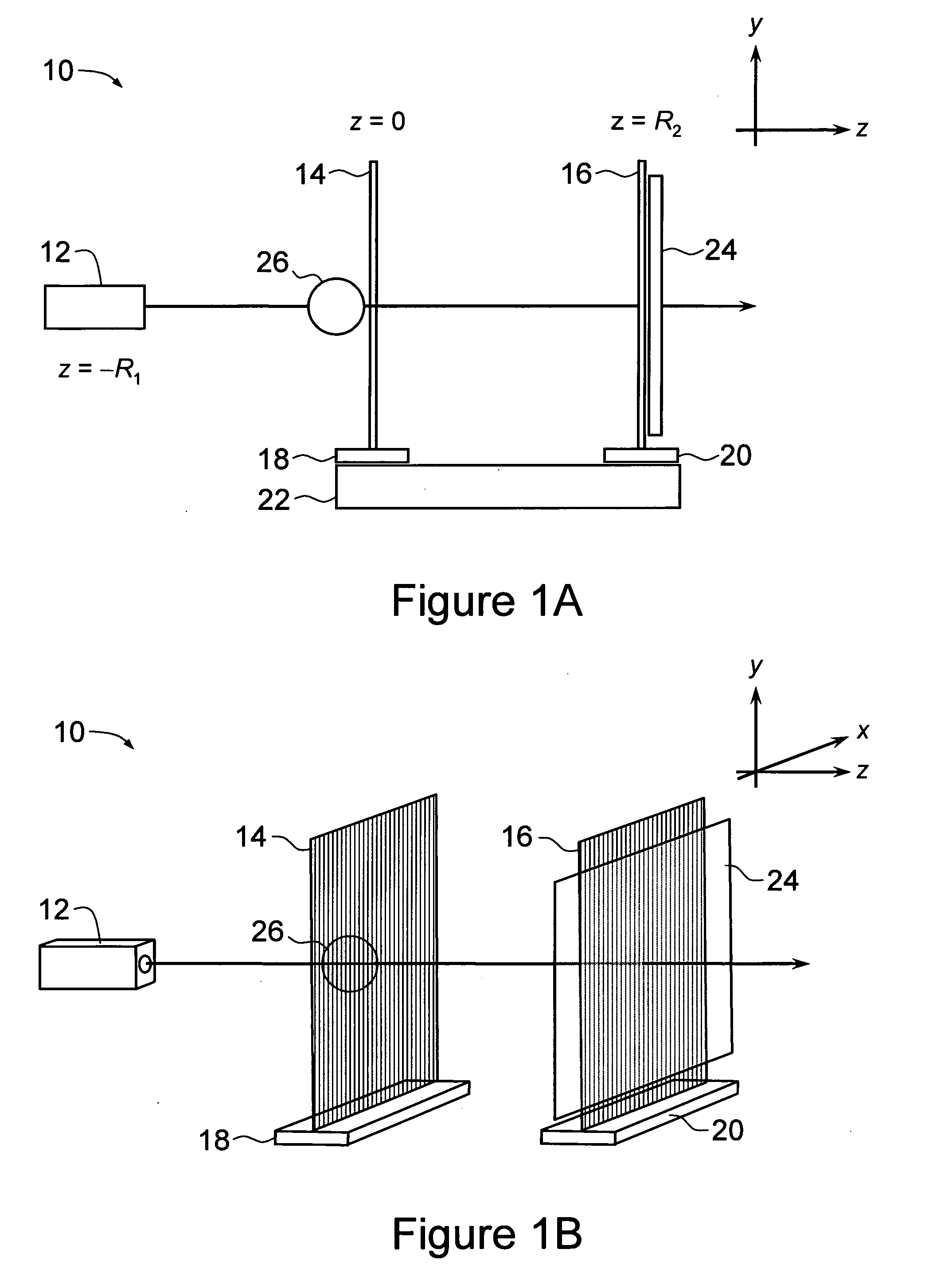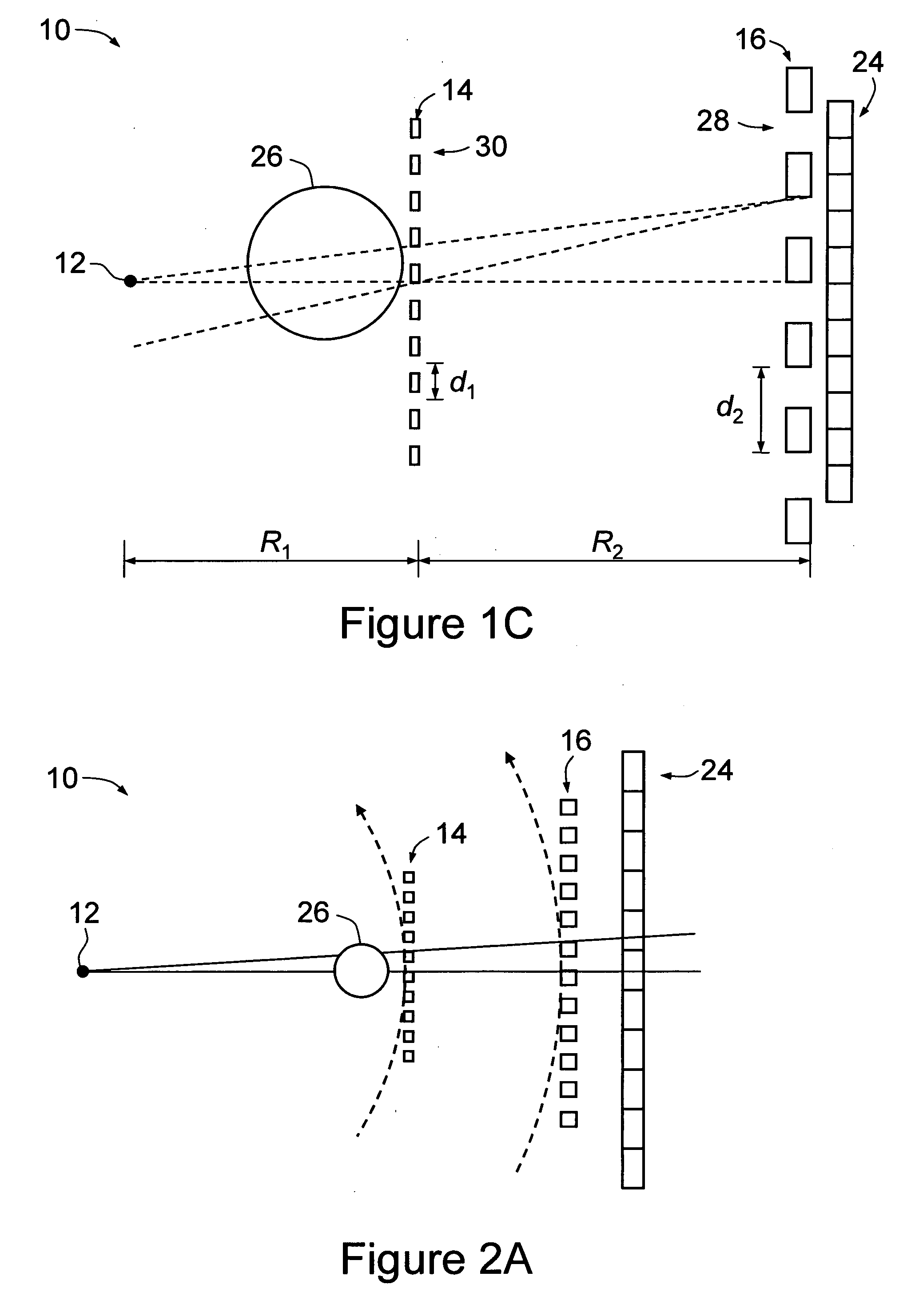Phase-contrast imaging method and apparatus
a phase-contrast imaging and phase-contrast technology, applied in the direction of photometry using electric radiation detectors, optical radiation measurement, instruments, etc., can solve the problems of severe practical difficulties, difficult interpretation of interferograms, and possible phase estimation ambiguities
- Summary
- Abstract
- Description
- Claims
- Application Information
AI Technical Summary
Benefits of technology
Problems solved by technology
Method used
Image
Examples
examples
[0189]Firstly, numerical experiments (viz. simulations of apparatus 10) and comparative examples were conducted using rigorous wave-optical theory based on Fresnel diffraction formula, in various imaging configurations.
[0190]In the first set of simulations, gratings 14, 16 were simulated as stationary during image collection, as having the same period of rectangular modulation, d=8 μm, and as having the same line-to-space ratio, 1:1; an X-ray wavelength of λ=0.62 Å, corresponding to an energy of 20 keV, was employed. The maximum phase shift of the phase grating (i.e. first grating 14) was n / 2. The distance between first and second gratings 14, 16 was R2=d2 / (2λ)=0.516 m. This is the distance at which a self-image of the phase grating 14 is produced [17]. An object 26 comprising a pure phase-object sphere of diameter 250 μm, radially smeared with a Gaussian function of 12.5 μm FWHM, and maximum phase shift of −2 rad, was simulated. A plane incident wave was assumed in this and subsequ...
PUM
 Login to View More
Login to View More Abstract
Description
Claims
Application Information
 Login to View More
Login to View More - R&D
- Intellectual Property
- Life Sciences
- Materials
- Tech Scout
- Unparalleled Data Quality
- Higher Quality Content
- 60% Fewer Hallucinations
Browse by: Latest US Patents, China's latest patents, Technical Efficacy Thesaurus, Application Domain, Technology Topic, Popular Technical Reports.
© 2025 PatSnap. All rights reserved.Legal|Privacy policy|Modern Slavery Act Transparency Statement|Sitemap|About US| Contact US: help@patsnap.com



